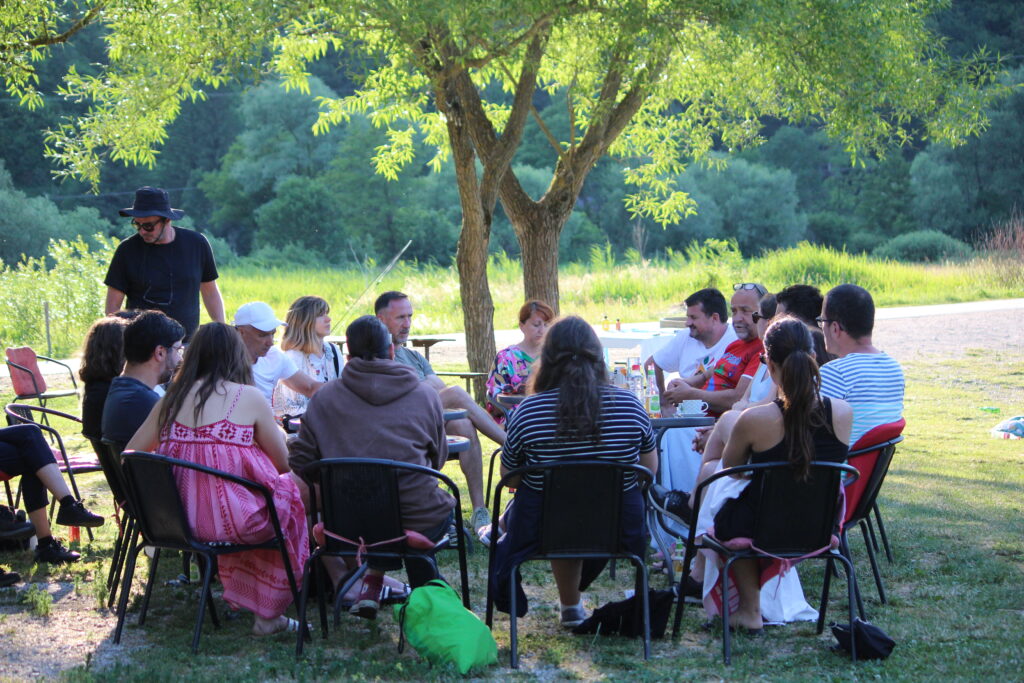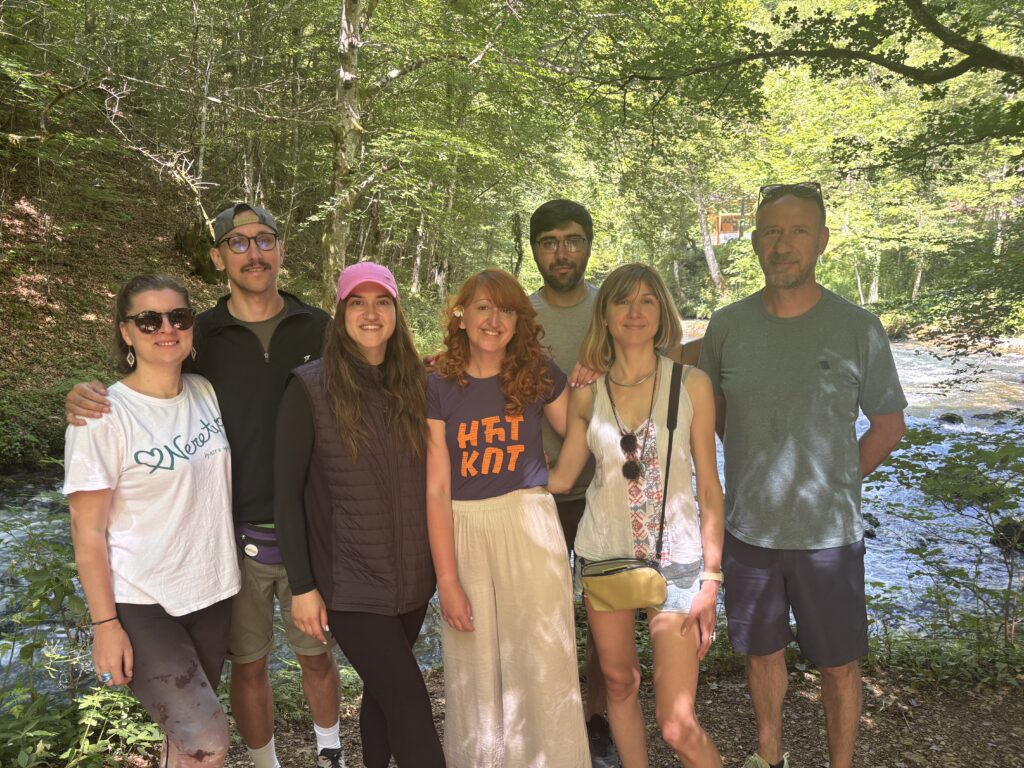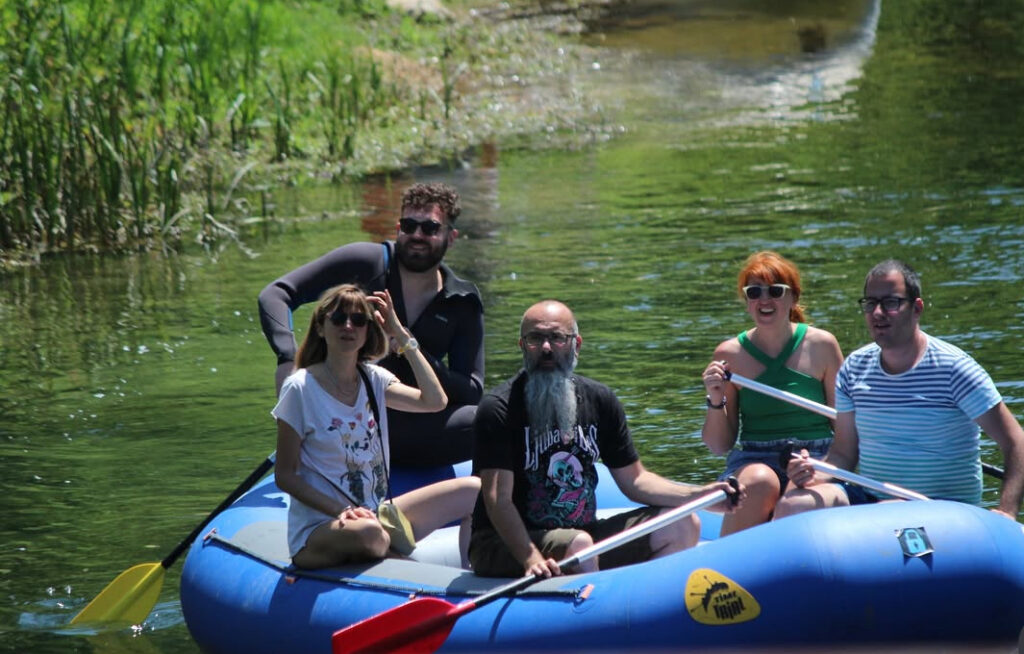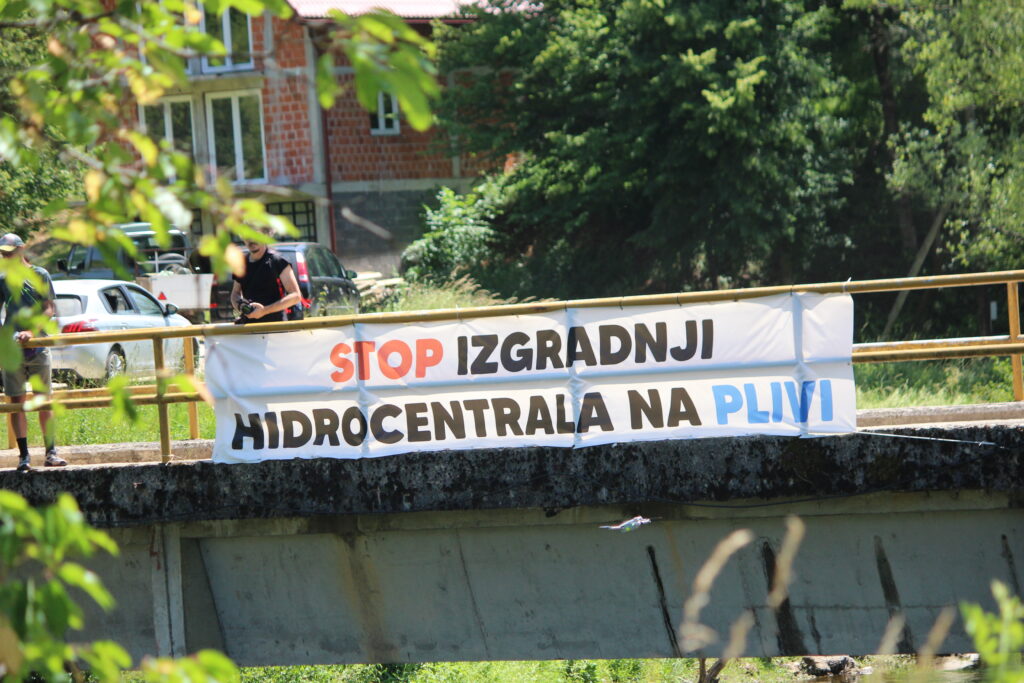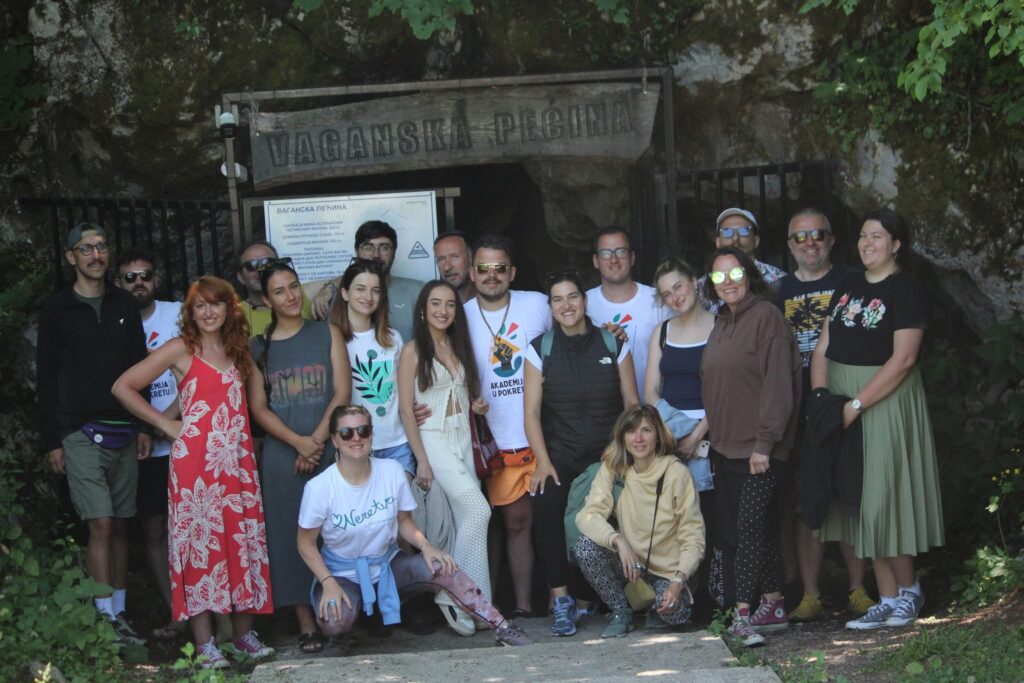To experience the atmosphere of the Pliva springs means to be reminded of the kind of world and the kind of value that nature defenders are striving to protect!
From the hidden, shaded forest, the Pliva wells up and bursts forth. One spring is not enough for it—out of the heart of the mountain it rushes into daylight at five different places, each unlike the other. One appears before a stone cottage, tame and modest like a household creature—yet once it slips past the garden gate it changes its nature, becoming a lively brook, bright blue and chattering. Another bursts suddenly through mossy rocks with the force of a grown river, teasing the forest fairies. When they finally meet and tumble together into the Pliva, they skip playfully over the stony bed and rush impatiently down the mountain; only near the plain do they lose their breath, slow down and spread wide, turning from blue to green, calm and quiet.
While the world burns and June heatwaves wreak havoc, the Pliva protects its surroundings with the calm of its icy mountain heart. This is no psychological illusion—its waters are uniquely cold and dense, so much so that in its calmer stretches they have been used for decades to train kayakers and rowers. Even more importantly, the Pliva is one of the largest sources of drinking water in Europe.
Unfortunately, this environment is also under threat of destruction. While old stone houses and a few cottages do not significantly harm the landscape or ecosystem, their existence is now overshadowed by the danger posed by two small hydropower plants. SHPP “Jovići” is maliciously planned at a fragile rock gorge, cherished by both locals and tourists. The other, SHPP “Kužo 1,” threatens one of the larger springs, planned just a few dozen meters away.
The Pliva is protected by the local informal citizens’ association “Guardians of Pliva,” which has repeatedly reminded the authorities that the small hydropower plant is planned “right in the middle of an area within the protected natural landscape zone, with about 120 meters of the riverbank simply excluded from the protection zone and handed over to the investor.” During the permit process, they also identified other issues, which is why the local association, together with the Foundation Atelier for Social Change – ACT, and the Center for Environmental Protection, have for months been “at odds” with the authorities.
The saying “one step forward, two steps back” aptly describes this struggle against reckless projects. After the court annulled the environmental permit for the small hydropower plant in July, the ministry issued a new one. The sectoral spatial plan for SHPPs defines public interest, while local residents and activists argue that this defies common sense. To make matters worse, the protection of this region from construction lasts only until spring 2026. “Kužo 1,” the SHPP planned near the spring, even received a building permit in April 2025. The investor, a company registered for sawing and treating wood, attempted to use the permit and in May brought construction machinery to the river. Construction was halted precisely thanks to the audacity of the “builder,” who began work without notice and illegally entered the riverbed with machinery.
The Pliva needs all the help it can get. Rivers know no borders. That’s why, at the invitation of the Guardians of Pliva and the Foundation Atelier for Social Change – ACT, Polekol, as a member of the Regional Alliance “Defend the Rivers of the Balkans,” visited Šipovo in early June and spent time at the Pliva springs. Together with other activists, mostly from Bosnia and Herzegovina, we also took part in a second action to clean the riverbed of this green beauty.
The Guardians of Pliva and activist organizations from Bosnia and Herzegovina say they will defend the river by all means—first through institutional channels, and afterwards, as is well known, with barricades and their own bodies.
